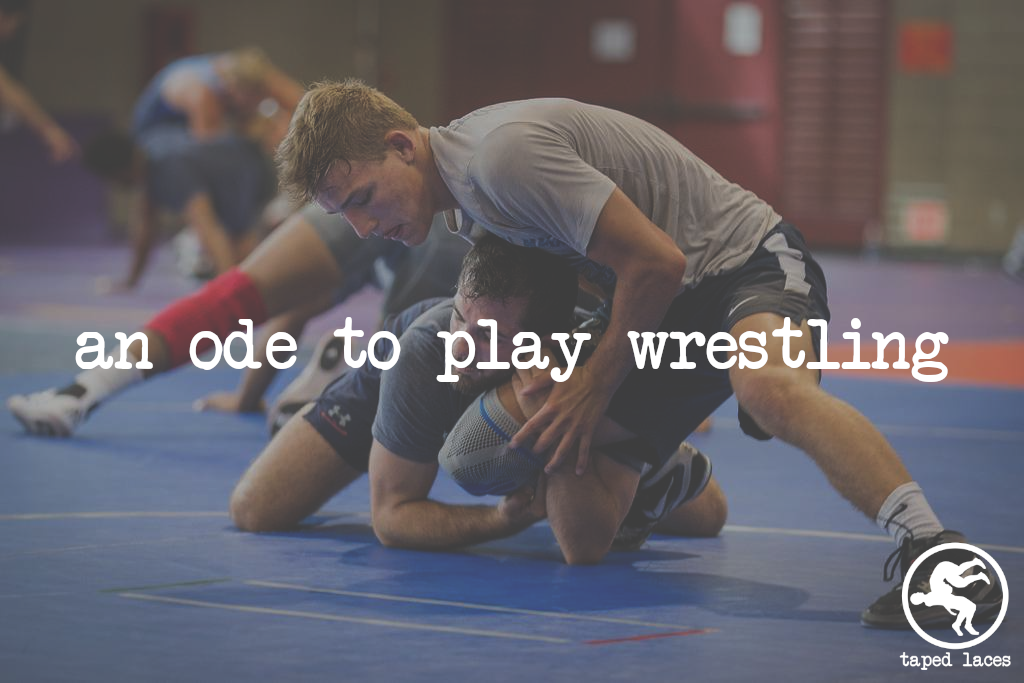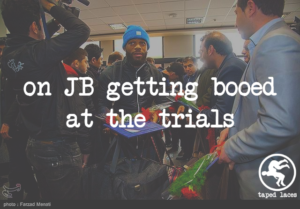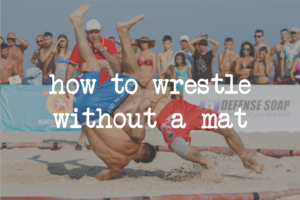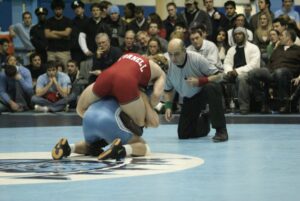A few months ago I stopped by a summer clinic being held near my old hometown. I’m not actively coaching right now, so I jump at the opportunity to get on the mat whenever people will have me, and it was good to see some old friends. The attendees were all from the surrounding county, one that is notably not very good at wrestling. There were a few kids that had done some winning, but mostly the clinic was geared towards very fundamental techniques. No difference to me, I just wanted to lace up the shoes for the day, it didn’t matter if I was teaching stance and motion or tilt theory.
As is the case when entering any wrestling room, it didn’t take long to get a temperature reading on everyone there: the know-it-alls, the ones who watch too many Instagram clips, the stoic hard-workers, the ones whose parents dragged them there, the social butterflies, the ones who trip and fall brushing their teeth,etc. In one corner of the mat I picked up on two wrestlers drilling who seemed to know what they were doing and I tuned in to their drill for a little. One was the confident high-school jock type, the other was more akin to the stereotypical wrestler persona: quiet, head down, getting to work. For most of the drill session the quiet one kept his left hand on an inside tie, hit two to three fake shots, then fired off lightning-fast sweep singles. I approached and offered a few nuggets of advice to both, which was met with verbal confirmation by one wrestler and a silent nod by the other. Message received, I’m a new face here and this session was about reps.
Near the end of the clinic, the head coach gave the athletes the floor to have open mat time, to work on whatever they want to work on. I hopped in with the quieter wrestler and offered a play-wrestle session. “Don’t necessarily try to score, just get into as many weird positions as we can, nothing stagnant.” He cautiously agreed and I opened up with a dive shot towards his ankle. He worked to defend and I built up to a waterfall position. He grabbed an ankle and the race was off. What followed was a manic blur of ankle passes, dive rolls, and spins. When I would get to a position where I could score, I pulled back, letting him grab a new hold and continuing the flow. The scramble lasted a good 90 seconds before he finally finished the takedown, planting me firmly on my back as I attempted a nonsensical roll that I can’t ascribe a name to.
Then it happened. I got some expression of emotion from him. “That was fun” he said, getting back into his stance to start the next go. We went for a few more minutes then I had to tap out due to being a washed-up old guy. After the clinic I couldn’t stop thinking about that moment. A wrestler who had likely only viewed his craft as a medium through which he could practice his hard work ideology, suddenly saw his sport in a new way. It can be creative. It can have no stakes. It can be fun.
Play wrestling as a practice activity is well-known to be instrumental for technical development. The likes of David Taylor, Ernie Monaco, and Jason Nolf have touted the benefits of getting deeper into scrambles to help create a game plan for positions that don’t present themselves in normal drilling. Scrambling is now considered a necessity to be successful, and those positions can’t be felt for the first time in a match. But looking past the benefits that it provides, I think wrestling becomes something different when the emphasis is shifted away from scoring and more towards flowing. It becomes rhythmic combat, it becomes artistic, it becomes jazz.
I never “got” jazz until I saw the movie La La Land. In the movie, Emma Stone’s character expresses the same distaste I felt about the genre, calling it elevator music, and Ryan Gosling’s character brings her to a jazz club to explain. Watching the performers he says, “Look at the sax player right now he just hijacked the song, he’s on his own trip. Every one of these guys is composing, they’re rearranging, they’re writing, and they’re playing the melody… And now look, the trumpet player, he’s got his own idea. And so it’s conflict, and it’s compromise, and it just, it’s new, everytime.” That, right there, is play wrestling. Unburdened by the pressure to “win,” it gives wrestlers ultimate freedom to trust their instincts, to invent maneuvers that don’t necessarily have names, to contort themselves into positions far outside of their comfort zones just to see what happens.
There aren’t really many sports where you can strip away the competitive core and still be left with anything resembling the original product. It would be like going for a jog with someone and every mile or so one runner breaks into a parkour routine that the other would try to emulate. I don’t mean to wax poetic on the topic, but it is such a great activity to help wrestlers get a new perspective on the philosophy of the sport and to have some genuine fun while still improving technically. If you are a coach who doesn’t currently have play wrestling as a part of your practices, I cannot recommend adding it enough.
